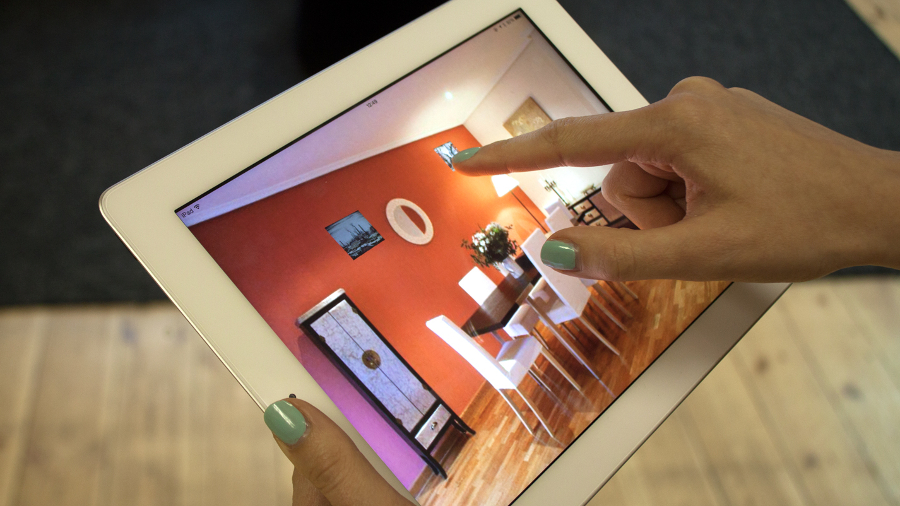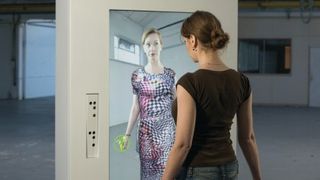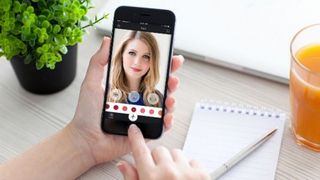
Augmented reality is, let's be honest, a lot of fun – especially when combined with VR – but what are developers doing to come up with genuinely practical uses for the technology? It's easy to be playful with AR, satisfying those marketing agencies and experiential technologists, but whilst it's revealing and fun to see under the skin of the latest hot hatchback by hovering an iPad over the hood (one of the first, ubiquitous uses of AR), surely there are more ways of augmenting our reality.
The US fashion industry was quick to develop practical uses for AR. Last year, Cymplifi Inc, a startup based in California, introduced an AR fashion app which encourages users to 'try on' clothes via their smartphones. Users overlay images of apparel on top of their pics or videos from the smartphone camera and then share the results via social media, before making a purchase from their device.
The video function is to be avoided – the clothing is static against the video's motion – but the photo try-on is pretty good, providing a reasonable idea of how the clothing might look when on, and certainly better than the usual model shots.

Extra texture
Staying with fashion, although not a new idea, Fashion3D is a 'virtual changing room' with a difference, providing 'accurate cloth simulation' of 3D clothing – a first. Fashion3D started life as the Virtual Style Pod, showcased in autumn 2013 at luxury Abu Dhabi retail destination, The Galleria, and was made universally available last year, appearing on Channel 4's Gadget Man.
Users stand in front of a video display masquerading as a full-length mirror, while augmented reality software overlays live video images with realistic 3D renders of clothing and other items. Fashion3D enables users to quickly create outfits by mixing and matching a wide range of garments from the retailer's inventory – without entering a changing room!
The most effective virtual changing room yet, the 3D, textured finish to the virtual clothing makes for a much more realistic experience – an effective way of short-listing an array of apparel before making a final decision in the physical changing room.
Mirroring reality
But what about AR makeup? There are a number of 'AR mirrors' available that simulate cosmetics in both real-time and 3D, and this type of application is becoming more widespread and more effective. Beauty retailer Sephora launched an AR eye shadow 'mirror' in its Milan Store last year, with tablets providing the live 'reflections' of users.
Are you a pro? Subscribe to our newsletter
Sign up to the TechRadar Pro newsletter to get all the top news, opinion, features and guidance your business needs to succeed!
Consumers access eye shadow colours via a virtual palette, and once 'applied' to their face they are able to move their head around to view the makeup from different angles. Virtual makeover tech from ModiFace tracks the location of users' facial features, producing a very convincing augmented makeup experience.

Even better is Face from digital creative studio Holition. Showcased earlier this year at Future15, a two-week, pop-up tech and content event in London, Face is arguably the best makeup app on the market. Smartphones or tablets are employed as the 'mirror', allowing users to try out the latest colours and shades.
But, unlike Sephora, Face goes much further than just eye shadow, with lipstick, blusher and foundation also available virtually. And as with Fashion3D, textures are also available, making for an enhanced, more realistic AR experience. Again, super-accurate real-time face tracking allows users to move faces around while observing the makeup they've applied, but this is a much smoother process and it's impressive to observe just how stable the experience is, with makeup staying fixed to lips and eyes as users move their head around.
Most Popular

